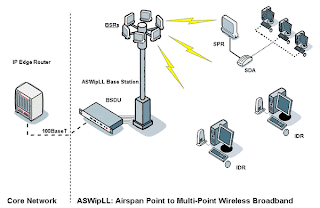
3G systems will provide access, by means of one or more radio links, to a wide range of telecommunication services supported by the fixed telecommunication networks and to other services that are specific to mobile users. A range of mobile terminal types will be encompassed, linking to terrestrial and/or satellite-based networks, and the terminals may be designed for mobile or fixed use
3G Information
Key features of 3G systems are a high degree of commonality of design worldwide, compatibility of services, use of small pocket terminals with worldwide roaming capability, Internet and other multimedia applications, and a wide range of services and terminals. According to the International Telecommunication Union (ITU) International Mobile Telecommunications 2000 initiative ("IMT-2000") third generation mobile ("3G") system services are scheduled to be initiated around the year 2000, subject to market considerations. The following Table describes some of the key service attributes and capabilities expected of 3G systems:
3G System Capabilities
Capability to support circuit and packet data at high bit rates:
144 kilobits/second or higher in high mobility (vehicular) traffic
384 kilobits/second for pedestrian traffic
2 Megabits/second or higher for indoor traffic
Interoperability and roaming
Common billing/user profiles:
Sharing of usage/rate information between service providers
Standardized call detail recording
Standardized user profiles
Capability to determine geographic position of mobiles and report it to both the network and the mobile terminal
Support of multimedia services/capabilities:
Fixed and variable rate bit traffic
Bandwidth on demand
Asymmetric data rates in the forward and reverse links
Multimedia mail store and forward
Broadband access up to 2 Megabits/second

